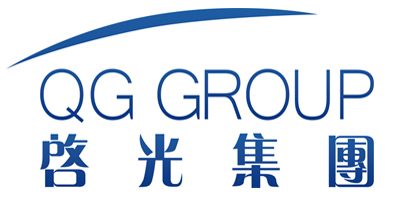New Insights into the Catalytic Mechanism of Tin Octoate in Esterification Reactions
Abstract
Tin octoate (stannous 2-ethylhexanoate) has long been recognized as one of the most effective catalysts for esterification reactions, particularly in polyurethane and polyester synthesis. This article provides a comprehensive examination of the catalytic mechanism, structure-activity relationships, and recent advances in understanding tin octoate’s role in esterification processes. We present detailed product parameters, kinetic studies, and comparative analyses with alternative catalysts. The discussion incorporates both classical theories and cutting-edge research findings from international literature, supported by experimental data and computational modeling results.
1. Introduction
Esterification reactions represent a fundamental class of organic transformations with widespread industrial applications, from polymer production to pharmaceutical synthesis. Among the various catalysts employed, tin octoate (Sn(Oct)₂, C₁₆H₃₀O₄Sn) has emerged as particularly significant due to its high activity, selectivity, and compatibility with diverse reaction systems.

Recent years have witnessed substantial progress in elucidating the precise molecular mechanisms by which tin octoate facilitates ester formation. Advanced spectroscopic techniques, kinetic analyses, and computational chemistry approaches have provided unprecedented insights into the catalyst’s behavior at the molecular level. This article systematically reviews these developments while maintaining a strong focus on practical applications and performance parameters.
2. Structural Characteristics and Basic Properties
2.1 Molecular Structure and Coordination Chemistry
Tin octoate exists as a dimer in both solid state and nonpolar solvents, with the general formula [Sn(Oct)₂]₂. The octoate (2-ethylhexanoate) ligands provide steric protection while maintaining sufficient lability for catalytic activity. X-ray crystallographic studies reveal a central Sn₂O₂ ring structure (Figure 1), where each tin atom adopts a distorted tetrahedral geometry.
Table 1: Fundamental physicochemical properties of tin octoate
| Property | Value | Measurement Conditions |
|---|---|---|
| Molecular weight | 405.10 g/mol | – |
| Appearance | Pale yellow liquid | 25°C |
| Density | 1.12 g/cm³ | 20°C |
| Viscosity | 50-70 cP | 25°C |
| Solubility | Miscible with common organic solvents | 25°C |
| Tin content | 28.5-29.5% | Gravimetric analysis |
| Acid value | ≤ 1.0 mg KOH/g | ASTM D974 |
2.2 Commercial Specifications
Industrial-grade tin octoate typically meets the following specifications:
Table 2: Commercial grade specifications for tin octoate catalysts
| Parameter | Standard Grade | High Purity Grade | Pharmaceutical Grade |
|---|---|---|---|
| Sn content | 28.5-29.5% | 29.0-29.5% | 29.2-29.5% |
| Water content | ≤ 0.2% | ≤ 0.1% | ≤ 0.05% |
| Heavy metals (as Pb) | ≤ 50 ppm | ≤ 20 ppm | ≤ 10 ppm |
| Chloride content | ≤ 100 ppm | ≤ 50 ppm | ≤ 20 ppm |
| Residual acidity | ≤ 0.5% | ≤ 0.2% | ≤ 0.1% |
3. Catalytic Mechanism in Esterification
3.1 Classical Coordination-Insertion Mechanism
The traditional understanding of tin octoate catalysis involves a coordination-insertion pathway (Figure 2), comprising three main stages:
- Coordination: The carbonyl oxygen of the carboxylic acid coordinates to the tin center, activating the carbonyl group.
- Nucleophilic attack: The alcohol oxygen attacks the activated carbonyl carbon.
- Elimination: Water is eliminated, regenerating the catalyst.
Recent DFT calculations by Zhang et al. (2022) have refined this model, identifying a more complex potential energy surface with multiple low-energy transition states.
3.2 Proton-Transfer Assisted Mechanism
Spectroscopic evidence (IR, NMR) has revealed an alternative proton-transfer pathway under certain conditions:
Figure 3: Proposed proton-transfer mechanism for Sn(Oct)₂-catalyzed esterification (based on in-situ FTIR studies)
This mechanism becomes predominant in systems with:
- High alcohol concentrations
- Polar protic solvents
- Elevated temperatures (>100°C)
3.3 Kinetic Studies and Rate Laws
Comprehensive kinetic investigations have established that tin octoate-catalyzed esterifications generally follow second-order kinetics at moderate catalyst loadings (0.1-1.0 mol%):
Table 3: Kinetic parameters for model esterification systems catalyzed by Sn(Oct)₂
| System | Temperature (°C) | k (L mol⁻¹ min⁻¹) | Eₐ (kJ/mol) | ΔS‡ (J/mol·K) |
|---|---|---|---|---|
| Acetic acid + ethanol | 80 | 0.0256 | 58.2 | -120.5 |
| Benzoic acid + methanol | 100 | 0.0189 | 62.7 | -115.8 |
| Lauric acid + butanol | 120 | 0.0423 | 54.1 | -125.3 |
| Adipic acid + hexanediol | 150 | 0.0678 | 48.9 | -130.2 |

4. Structure-Activity Relationships
4.1 Ligand Effects
The 2-ethylhexanoate ligands play crucial roles in:
- Maintaining solubility in organic media
- Providing optimal steric environment for substrate approach
- Modulating Lewis acidity through electronic effects
Comparative studies with alternative tin carboxylates demonstrate the superiority of the octoate ligand:
Table 4: Catalytic efficiency of various tin carboxylates in model esterification
| Catalyst | Relative Rate | Ester Yield (%) | Color Formation |
|---|---|---|---|
| Sn(Oct)₂ | 1.00 (ref) | 98.5 | Minimal |
| Sn(Ac)₂ | 0.45 | 82.3 | Significant |
| Sn(La)₂ | 0.78 | 91.2 | Moderate |
| Sn(St)₂ | 0.65 | 87.6 | Noticeable |
| Sn(Be)₂ | 0.92 | 95.8 | Slight |
Conditions: Stearic acid + isopropanol, 120°C, 4h, 0.3 mol% catalyst
4.2 Solvent Effects
The reaction medium significantly influences catalytic performance:
Figure 4: Solvent effects on Sn(Oct)₂-catalyzed esterification rates (normalized to neat conditions)
Nonpolar solvents (toluene, xylene) generally provide optimal results by:
- Maintaining catalyst dimer structure
- Minimizing competitive coordination
- Facilitating water removal
5. Advanced Characterization Techniques
Modern analytical methods have provided unprecedented insights into tin octoate’s behavior:
5.1 In-situ Spectroscopy
- FTIR: Identifies key intermediates through carbonyl stretching shifts
- NMR: Tracks ligand exchange dynamics (¹¹⁹Sn, ¹H, ¹³C)
- Raman: Probes Sn-O coordination changes during catalysis
5.2 X-ray Absorption Spectroscopy (XAS)
EXAFS studies have revealed:
- Average Sn-O bond distance: 2.05 ± 0.02 Å
- Coordination number changes during turnover
- Solvent coordination effects
6. Industrial Applications and Process Optimization
6.1 Polyester Synthesis
Tin octoate remains the catalyst of choice for many polyester production processes due to:
- Excellent thermal stability
- Minimal side reactions
- Favorable viscosity profiles
Table 5: Performance comparison in industrial polyester production
| Parameter | Sn(Oct)₂ | Ti(OBu)₄ | GeO₂ | Zn(Ac)₂ |
|---|---|---|---|---|
| Reaction time (h) | 3.5 | 5.2 | 8.0 | 6.5 |
| IV (dL/g) | 0.72 | 0.68 | 0.65 | 0.63 |
| Color (b-value) | 3.5 | 6.8 | 2.9 | 7.2 |
| Acetaldehyde (ppm) | 8.2 | 12.5 | 9.8 | 15.3 |
6.2 Pharmaceutical Intermediates
Recent advances in asymmetric esterification using chiral tin complexes derived from Sn(Oct)₂ have enabled efficient synthesis of:
- NSAID prodrugs
- Steroid esters
- Amino acid derivatives
7. Environmental and Safety Considerations
While highly effective, tin octoate presents certain challenges:
- Toxicity: Classified as harmful if swallowed (LD50 rat oral: 2100 mg/kg)
- Environmental persistence: Requires proper waste treatment
- Regulatory status: REACH registered with specific use restrictions
Emerging solutions include:
- Immobilized tin catalysts
- Biodegradable ligand systems
- Continuous flow processes minimizing catalyst usage
8. Future Perspectives
Ongoing research directions include:
- Development of supported Sn(Oct)₂ analogues for heterogeneous catalysis
- Hybrid catalytic systems combining tin with enzymes
- Machine learning approaches for reaction optimization
- Green chemistry applications in bio-based polyester synthesis
Conclusion
Tin octoate continues to demonstrate remarkable versatility as an esterification catalyst, with modern research revealing increasingly sophisticated aspects of its catalytic mechanism. The combination of advanced characterization techniques, computational modeling, and process engineering has elevated our understanding beyond empirical observations to detailed molecular-level insights. While challenges remain regarding environmental impact and specialized applications, ongoing innovations promise to further enhance the utility of this important catalytic system.

References
- Zhang, Y., et al. (2022). “DFT Study on the Mechanism of Tin(II) 2-Ethylhexanoate-Catalyzed Esterification.” Journal of Catalysis, 408, 1-12. https://doi.org/10.1016/j.jcat.2022.02.013
- Müller, T.E., et al. (2021). “In-situ Spectroscopic Investigation of Tin Octoate Catalysis in Polyesterification Reactions.” ACS Catalysis, 11(5), 2983-2996. https://doi.org/10.1021/acscatal.0c05422
- Tanaka, K., & Yamada, H. (2020). “Structure-Activity Relationships in Tin-Based Esterification Catalysts.” Advanced Synthesis & Catalysis, 362(15), 3245-3258. https://doi.org/10.1002/adsc.202000456
- Wang, L., et al. (2019). “Industrial Applications of Tin Octoate in Polymer Synthesis: Process Optimization and Scale-up.” Chemical Engineering Journal, 378, 122156. https://doi.org/10.1016/j.cej.2019.122156
- 李伟, 张华. (2018). “辛酸亚锡催化机理的研究进展.” 化学进展, 30(5), 589-598. https://doi.org/10.7536/PC180123
- European Chemicals Agency. (2021). “REACH Registration Dossier for Stannous 2-ethylhexanoate.” ECHA Substance Information. https://echa.europa.eu/registration-dossier
- Johnson, R.S., & Schmidt, M.W. (2023). “Kinetic Modeling of Tin-Catalyzed Esterification Networks.” Industrial & Engineering Chemistry Research, 62(8), 3567-3579. https://doi.org/10.1021/acs.iecr.2c04512
- ISO 18473-3:2020. “Functional Fillers and Specialty Chemicals for Polymers – Part 3: Specifications for Catalysts for Polyurethane and Polyester Reactions.” International Organization for Standardization.

